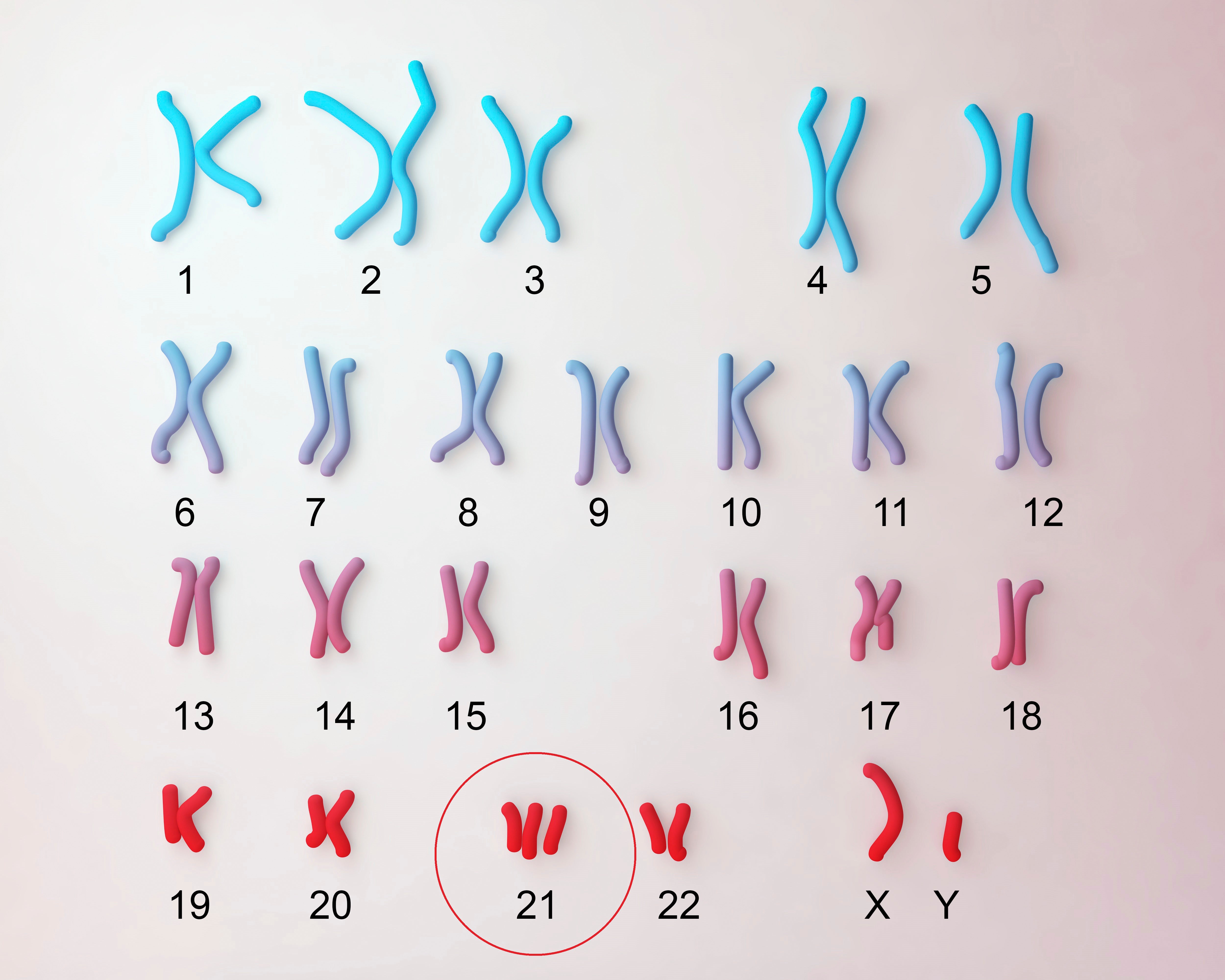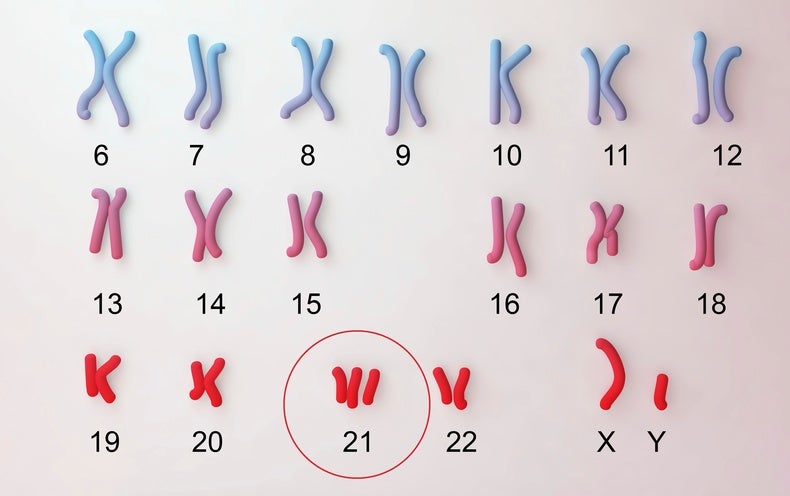
One in 800 children are born with Down syndrome, the most common genetic cause of intellectual disability. The vast majority of cases are caused by having three copies of chromosome 21 instead of two. People with Down syndrome also have reduced fertility, and their sense of smell is often impaired or lost. No treatments have been found so far for the neurological symptoms.
In a study published on September 1 in Science, neuroscientist Vincent Prevot of the University of Lille in France and a team of European researchers show that a hormone known for regulating reproductive function—gonadotropin-releasing hormone, or GnRH—may represent a promising treatment for cognitive problems in Down syndrome. They found that in mice genetically engineered to model Down syndrome, a decline in GnRH levels closely parallels cognitive deficits and then showed that restoring GnRH reverses the disabilities. They also conducted a trial in seven men with Down syndrome, six of whom showed improvements in cognition. The results pave the way for clinical trials and may even have broader application in other conditions involving cognitive decline, including Alzheimer’s disease.
For people with Down syndrome, puberty brings a worsening of cognitive symptoms, and many experience a deterioration in smell. In a previous study, Prevot and his colleagues discovered that, just before puberty, a molecular “switch” is thrown that elevates GnRH levels. The switch involves molecules called microRNAs that are found in GnRH neurons, where they control GnRH release, which in turn regulates puberty. These observations prompted Prevot and his colleagues to wonder if GnRH might play a dual role in Down syndrome, affecting both fertility and sexual maturation, as well as cognitive deterioration.
GnRH neurons are found primarily in the hypothalamus, a deep-brain region that controls bodily functions, such as blood pressure and hunger. From there, they connect to the pituitary, where they release GnRH in pulses, regulating sexual development and fertility. All of this is well understood, but some GnRH neurons also connect to the cortex and hippocampus, brain regions associated with learning and memory. “There’s been speculation that GnRH must do something in the brain,” says neurobiologist Hanne Hoffmann of Michigan State University, who was not involved in the study but wrote an accompanying commentary in Science. Researchers had not understood what that was, however—until now.
The team studied mice that had three copies of their equivalent of chromosome 21 and displayed symptoms of Down syndrome. After seeing declines in olfactory and cognitive function and GnRH levels at puberty, the researchers set out to see if any of the changes were reversible. They had also observed that the functioning of the network of microRNAs and genes that controls the GnRH switch was out of balance, so they first tried increasing levels of one of the microRNAs. This abolished the olfactory and cognitive deficits. “This work reveals new players, such as microRNAs, that may play a role in Down syndrome neuropathology,” says neurobiologist Mara Dierssen of the Center for Genomic Regulation in Spain, who was not involved in the study.
To be sure the benefit was because of GnRH, the team used several other techniques to boost the hormone, including injections of cells, brain tissue grafts from healthy mice and a technique called chemogenetics, in which a switch is genetically inserted into neurons and then activated with a drug. The outcome was always the same: performance returned to the level of healthy mice. Similar results were seen in mice modeling Alzheimer’s disease. “These results were so convincing that our clinical colleague said, ‘We have to try this in Down syndrome patients,’” Prevot says.
The team then conducted a pilot study in seven adult men with Down syndrome. The treatment involved administering regular pulses of GnRH for six months using a mini pump that was inserted under the skin. Participants underwent cognitive tests and brain imaging to assess the status of brain connections before and after treatment. “Six out of seven patients improved their cognitive tests by 20 to 30 percent,” Prevot says. “Even more amazing, we saw that functional connectivity was tremendously increased in all seven in cortical areas involved in speech and 3-D orientation.” Specifically, there were improvements in verbal comprehension, temporary “working” memory and attention but not sense of smell.
The treatment was also safe, which is not surprising because it used pulses of hormone designed to mimic natural release patterns. “What makes this exciting is it ‘piggybacks’ on what’s already there,” Hoffmann says. The technique’s ability to improve cognition in people with Down syndrome has not yet been scientifically proved, however. “The link with human cognitive impairment is still hypothetical,” says geneticist Stylianos Antonarakis of the University of Geneva, who was not involved in the work. “The human experiment is very preliminary and lacks controls.” The study is a starting point for further research. “Even though [it is] promising, we should be careful not to raise expectations too high,” Dierssen says. “While the authors see deficits in female mice, they didn’t test women in their clinical study.” GnRH release patterns are more complex in women. “The pulse frequency changes as part of the menstrual cycle; that’s why women are harder,” Hoffmann says. But “I’d expect this to work in women as well.”
A clinical trial involving 70 male and female patients at multiple institutions will launch in the fall. The team also plans to test the approach in other conditions. “If GnRH therapy improves cognition in this large cohort of Down syndrome patients, many possibilities are open,” Prevot says. The mouse experiments suggest it may slow cognitive decline in Alzheimer’s disease. In fact, there is already a clinical trial for treating Alzheimer’s with a molecule similar to GnRH. The technique may even help with age-related cognitive decline in general. “You’re not going to delay aging, but you might be able to delay cognitive decline, which would be amazing,” Hoffmann says.

























































.jpeg)
